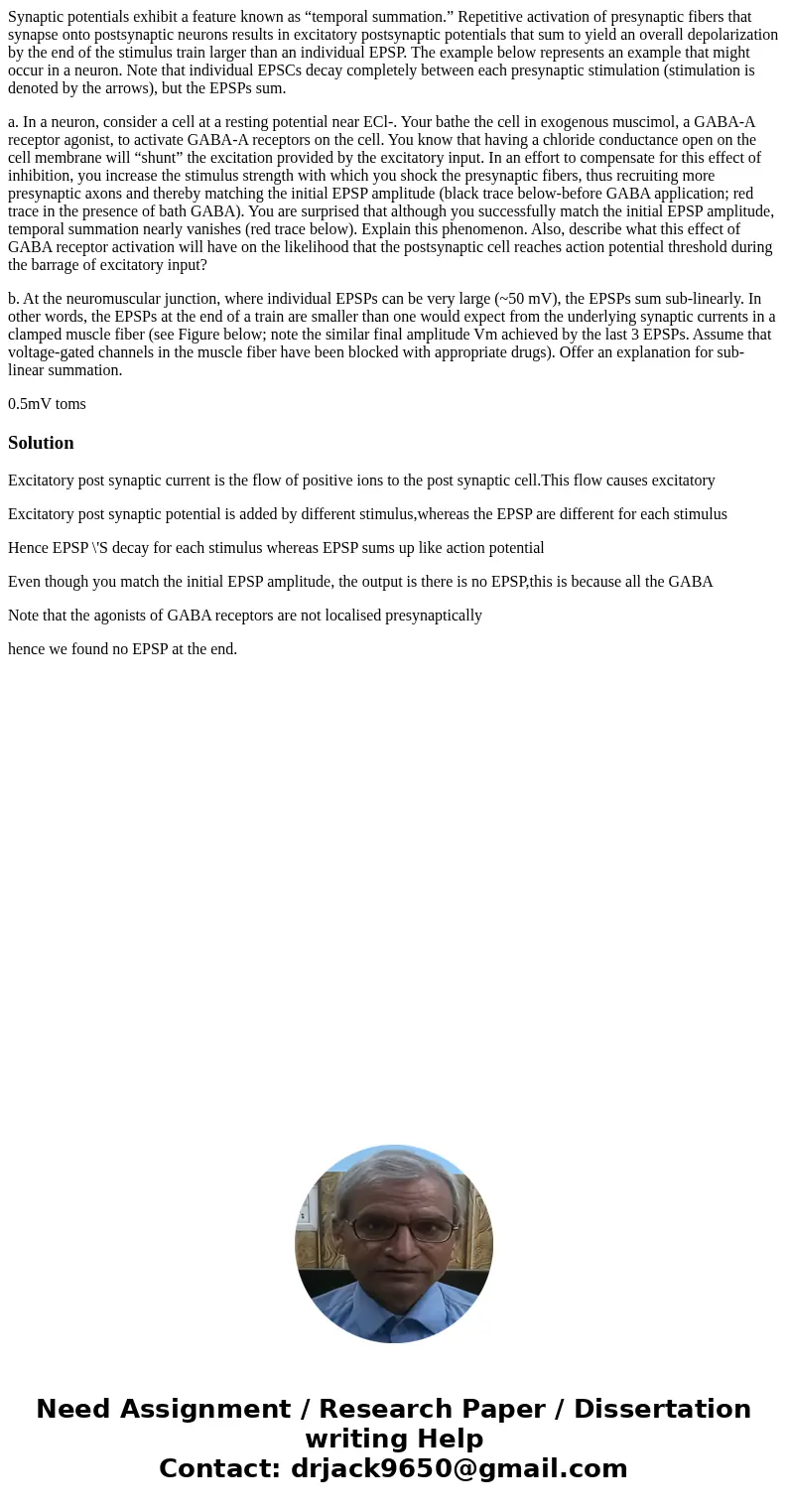Synaptic potentials exhibit a feature known as temporal summ
Synaptic potentials exhibit a feature known as “temporal summation.” Repetitive activation of presynaptic fibers that synapse onto postsynaptic neurons results in excitatory postsynaptic potentials that sum to yield an overall depolarization by the end of the stimulus train larger than an individual EPSP. The example below represents an example that might occur in a neuron. Note that individual EPSCs decay completely between each presynaptic stimulation (stimulation is denoted by the arrows), but the EPSPs sum.
a. In a neuron, consider a cell at a resting potential near ECl-. Your bathe the cell in exogenous muscimol, a GABA-A receptor agonist, to activate GABA-A receptors on the cell. You know that having a chloride conductance open on the cell membrane will “shunt” the excitation provided by the excitatory input. In an effort to compensate for this effect of inhibition, you increase the stimulus strength with which you shock the presynaptic fibers, thus recruiting more presynaptic axons and thereby matching the initial EPSP amplitude (black trace below-before GABA application; red trace in the presence of bath GABA). You are surprised that although you successfully match the initial EPSP amplitude, temporal summation nearly vanishes (red trace below). Explain this phenomenon. Also, describe what this effect of GABA receptor activation will have on the likelihood that the postsynaptic cell reaches action potential threshold during the barrage of excitatory input?
b. At the neuromuscular junction, where individual EPSPs can be very large (~50 mV), the EPSPs sum sub-linearly. In other words, the EPSPs at the end of a train are smaller than one would expect from the underlying synaptic currents in a clamped muscle fiber (see Figure below; note the similar final amplitude Vm achieved by the last 3 EPSPs. Assume that voltage-gated channels in the muscle fiber have been blocked with appropriate drugs). Offer an explanation for sub-linear summation.
0.5mV tomsSolution
Excitatory post synaptic current is the flow of positive ions to the post synaptic cell.This flow causes excitatory
Excitatory post synaptic potential is added by different stimulus,whereas the EPSP are different for each stimulus
Hence EPSP \'S decay for each stimulus whereas EPSP sums up like action potential
Even though you match the initial EPSP amplitude, the output is there is no EPSP,this is because all the GABA
Note that the agonists of GABA receptors are not localised presynaptically
hence we found no EPSP at the end.

 Homework Sourse
Homework Sourse